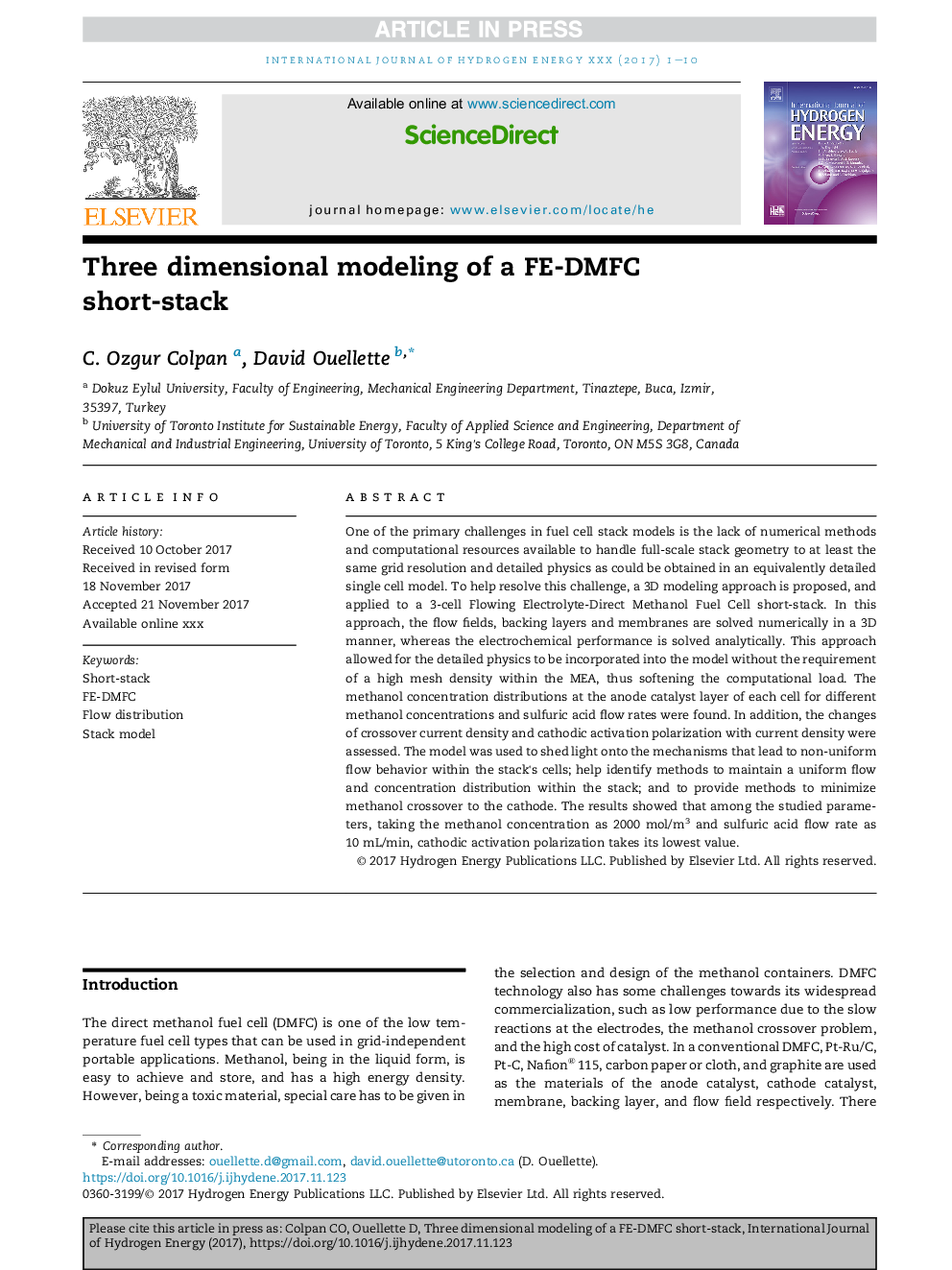| Article ID | Journal | Published Year | Pages | File Type |
|---|---|---|---|---|
| 7707194 | International Journal of Hydrogen Energy | 2018 | 10 Pages |
Abstract
One of the primary challenges in fuel cell stack models is the lack of numerical methods and computational resources available to handle full-scale stack geometry to at least the same grid resolution and detailed physics as could be obtained in an equivalently detailed single cell model. To help resolve this challenge, a 3D modeling approach is proposed, and applied to a 3-cell Flowing Electrolyte-Direct Methanol Fuel Cell short-stack. In this approach, the flow fields, backing layers and membranes are solved numerically in a 3D manner, whereas the electrochemical performance is solved analytically. This approach allowed for the detailed physics to be incorporated into the model without the requirement of a high mesh density within the MEA, thus softening the computational load. The methanol concentration distributions at the anode catalyst layer of each cell for different methanol concentrations and sulfuric acid flow rates were found. In addition, the changes of crossover current density and cathodic activation polarization with current density were assessed. The model was used to shed light onto the mechanisms that lead to non-uniform flow behavior within the stack's cells; help identify methods to maintain a uniform flow and concentration distribution within the stack; and to provide methods to minimize methanol crossover to the cathode. The results showed that among the studied parameters, taking the methanol concentration as 2000Â mol/m3 and sulfuric acid flow rate as 10Â mL/min, cathodic activation polarization takes its lowest value.
Keywords
Related Topics
Physical Sciences and Engineering
Chemistry
Electrochemistry
Authors
C. Ozgur Colpan, David Ouellette,
